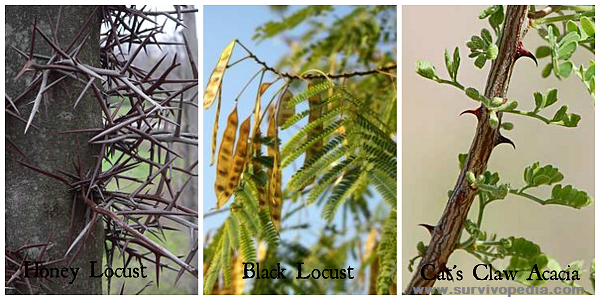Most people like to keep their homes equally inviting on the inside and outside. This is especially true in modern-day suburbia where many homeowners keep their lawns and gardens looking pristine. The landscaping outside sets the stage for what the inside of the home will look like.
A well-manicured lawn with trimmed bushes and freshly planted flowers is more likely to surround a home with hardwood floors, granite countertops and expensive electronics. A yard with uncut grass and crumbling walkways is more likely to give way to unkempt home with less valuable possessions. This isn’t always the case, but thieves have taken advantage of this rule of thumb many times over.
It’s usually the dead giveaways and false sense of security that certain homes display that make them easy marks for burglars. The car you drive and your trash can give a thief a lot of information about your finances and purchases. Yet it’s also the homes with little or no visible security features (cameras, motion lights, fencing) that often draw in the criminal.
People break into homes because they are driven by greed and the desire to take from others, or we make it too easy for them to do so. Instead of going for the big homes with sports cars in the driveway, thieves often go for the most vulnerable homes that offer the easiest access.

As a homeowner, you can go to great lengths to fortify your home and property to protect it against thieves and home invaders. Fortunately, you don’t need to shell out a ton of cash on hi-tech alarms and cameras to deter them. Instead, all you need is to make it more difficult for them to access your home’s weakest entry points from the outside.
Below we will discuss the idea of protecting your home with various plants and defensive bushes, which are often all it takes to make a prowling thief skip your home altogether.
Bushes from Wall to Window
Believe it or not, plants and bushes have been used for centuries to designate property lines and home perimeters. They’ve also been adapted to make those homes and properties more protected against outside threats. These same techniques still apply whether you simply want to bolster your home’s security or are preparing your property for surviving the apocalypse.
Thorny and spiked plants growing in vulnerable spots near your home and property are unwelcome signs to intruders. Their natural forms of protection create a hostile environment for a potential thief to pass through.
Defensive plants and bushes can scratch, cut, and puncture the thief and cause him to leave behind DNA in the form of blood, skin, or torn clothing.
Keep in mind that not every variety of plant can grow in certain parts of the world. Its up to you to do the research as to what will work best for your home and property.
A hedgerow of thorny bushes can go a long way to discouraging unwanted intruders. These bushes should be thick and tall enough to discourage intruders from fighting their way over or through. Yet they should also be cropped low enough to keep your home visible from the street. That way, thieves are less likely to go to work without being spotted.
Accordingly, most plants and trees in your yard should be trimmed regularly to give you a clear line of sight across your property and eliminate hiding spots for thieves.

Trees with thorns on their trunk and branches are less likely to be scaled in order to get to a second floor window or balcony. Some examples include:
- Argentine Mesquite (2-inch thorns),
- Black Locust (1 to 2-inch thorns that cause skin swelling),
- Honey Locust (sharp red thorns).
Thorn bearing bushes, especially when planted around windows, can be a nightmare to get caught up in. Just one brush against certain thorn bushes can be enough to send a thief packing. That is unless he’s wearing several layers of protective clothing and fueled with determination (or stupidity).
The pyracantha, or fire thorn bush, contains thorns that leave a burning sensation that lasts for hours. The catsclaw acacia also contains burning nettles that it conceals under yellow flowers and plumes of green leaves. Oregon grape holly (as well as other varieties of holly) is both attractive and dangerous with its abundance of multi-spiked leaves.
Then there’s always the many variety of cacti, most of which are covered in sharp and irritating thorns that can grow several inches in length. Vined plants that grow upward and out are another eye pleaser that also serve as a natural form of security. Bougainvillea (common to Central and South America) bloom beautiful pinkish-purple flowers that conceal pointy thorns.

Climbing varieties of roses can serve a similar purpose and be cultivated to span entire walls of your home. Blackberry and raspberry vines also grow thorns that serve to protect their fruits, giving you both protection and a supply of freshly grown food.
While not comprehensive, these ideas should help you get started using Mother Nature to help protect your home and property. Landscaping as means to fortify your home against intruders is a concept that most homeowners overlook when formulating a security plan or preparing for a disaster survival situation.
In today’s times, a locked door and security alarm isn’t always enough to stop a determined thief. But if your yard, walls, and windows are covered with defensive bushes and plants, most thieves will think twice before attempting to break in.
This article has been written by Cody Griffin for Survivopedia.











































































Thanks for you input. Always enjoy reading your comments.
I live in central TX and have access to numerous cacti, yucca and agave. I also have pampas grass planted along one of my fences. They really discourage uninvited guests.
http://www.missouribotanicalgarden.org/PlantFinder/PlantFinderDetails.aspx?kempercode=e790. This is a link to a plant that would be excellent for home defense. The trifoliate orange has sturdy 3″ thorns that do not break off. This plant has been used outside of minimum security prisons because if you land on this baby you will be hurting.
It’s a little late in the game to be waiting for plants to grow. When the SHTF the neighbors won’t care what your house looks like. Where do I buy razor wire?
Nice ideas, pyracantha has some pretty flowers. However I would make sure your property is fenced in. Last thing you want is some kid wandering into your yard and getting tangled into these plants. Parents would sue. In this nanny state we live in, they would win irregardless of if the kid was trespassing on your property.
“you don’t need to shell out a ton of cash on hi-tech alarms and cameras to deter them.”
Have you calculated the cost of buying enough of these bushes to create a perimeter lately ? I think for most people with an average sized property security cameras and an alarm would be the budget option
Depends on where you live I guess. It might be more expensive in some places, but I noticed other places where thorny plants grow wild and are everywhere, and can be transplanted for free (save for the time and effort it would take, but it’s worth it).
I’m pretty sure blackberry is what Malificent uses around her castle… fair warning, they go crazy and I don’t know if they are worse dead or alive. NO ONE just strolls thru those vines!
Also consider gooseberry or Jostaberry (a Gooseberry/Black current cross breeding) that can be trained to Espalier on wire or fence and along walls in different shapes.